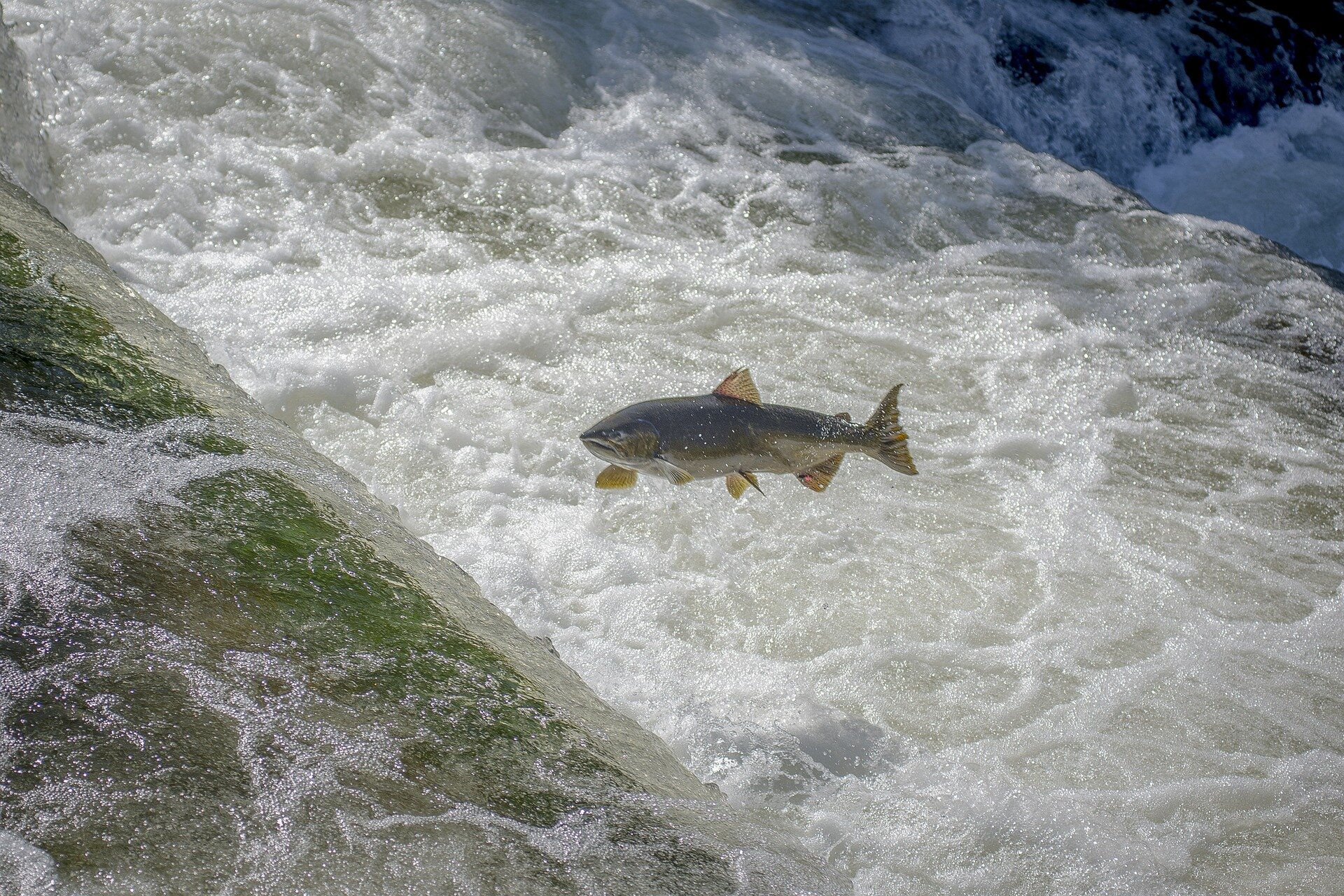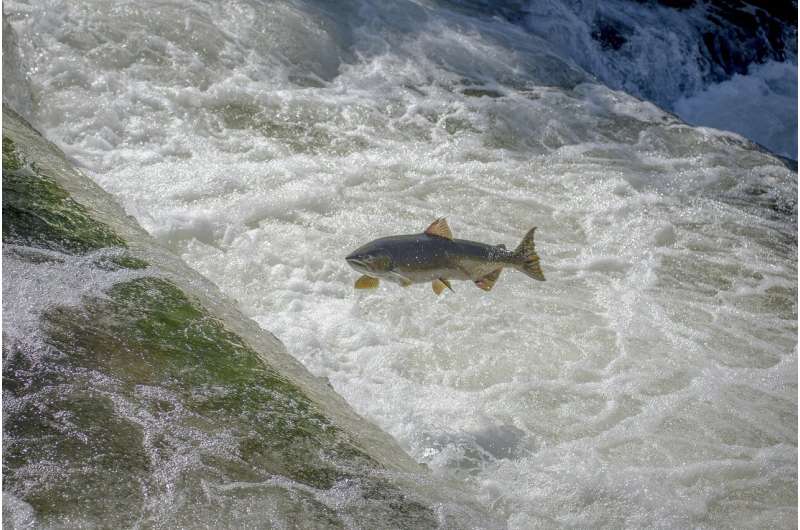

Researchers from Tokyo Metropolitan University have created a mathematical model that models how the evolutionary strategies of organisms are affected by the environment. They studied salmonid fishes which choose either to migrate to the sea then return to lay eggs or stay in the river depending on their individual features.
The work is published in the journal Population Ecology.
Their model correctly predicts how the proportion choosing to migrate changes with environmental conditions, predicting how environmental change can trigger eco-evolutionary responses.
Salmonids (or salmon-like) fish are known to face a tough choice early in their lives. They can either stay where they are their entire lives or migrate to the sea where they adapt to seawater. Those that migrate then come back to the river to lay their eggs.
This coexistence of steeply diverging strategies by which these fish survive can have a complex impact on how their populations evolve, particularly given their interaction with the environment, and how that might impact the features of individuals and lead to a changing proportion taking up different pathways.
While such divergences are not rare in the animal kingdom, the way in which this can impact the evolution of a population is not fully understood.
To get more insight into this problem, a team of scientists led by Jun-nosuke Horita of the Japan Weather Association and Assistant Professor Yuuya Tachiki of Tokyo Metropolitan University have built a mathematical model which incorporates known traits of a particular salmonid, the female masu salmon, and looks at how populations change over time given the availability of alternative tactics.
Female masu salmon have three tactics available to them. They can stay in the river where they are born their entire lives (residents), migrate to the sea after a year (early migrants), or move at a later stage of their lives (late migrants).
For simplicity, they modeled the salmon to be either resident or early migrants and incorporated known features of salmon demographics, such as the number of eggs given per individual, and their survival rate. A key feature was the incorporation of size distributions, since specimens which are smaller at an early stage of their lives are more likely to choose the migratory route.
Using their model, the team were able to show that there was a wide range of parameters over which a stable population was maintained. Importantly, they could identify a set of conditions under which alternative strategies began to kick in.
They found that a river environment which was poor for survival coupled with a fertile sea environment led to a greater likelihood of divergent migratory tactics. Importantly, this is exactly what is seen in nature.
They were also able to study extreme cases which may be difficult to consider otherwise. For example, when the survival rate of the harsh migration process dips below a certain point, there is a sudden switch which leads to entire populations becoming residents.
The ability to predict how populations choose different migratory strategies is important for understanding eco-evolution, and conversely, how environmental change can impact the survival of organisms.
The team hope that their work may be applied to gauge and predict how anthropogenic changes can impact animal populations.
More information:
Jun‐nosuke Horita et al, An age‐stage structured population model for the coexistence of alternative migratory tactics in salmonid fishes, Population Ecology (2024). DOI: 10.1002/1438-390X.12196
Provided by
Tokyo Metropolitan University
Citation:
Mathematical model illuminates how the environment impacts life choices of salmon (2024, November 4)
retrieved 5 November 2024
from https://phys.org/news/2024-11-mathematical-illuminates-environment-impacts-life.html
This document is subject to copyright. Apart from any fair dealing for the purpose of private study or research, no
part may be reproduced without the written permission. The content is provided for information purposes only.